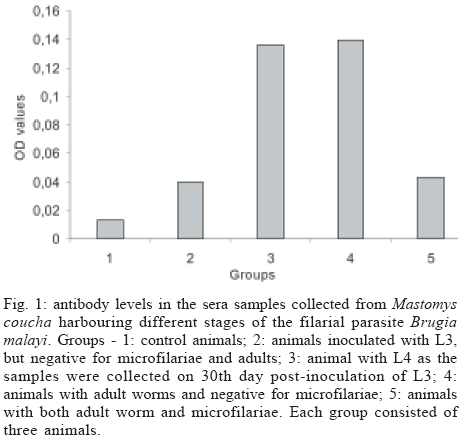Lymphatic filariasis caused by nematode parasites Wuchereria bancrofti or Brugia malayi is a spectral disease and produces wide range of immune responses and varying levels ofmicrofilaraemia in infected individuals. The relationship between the immune response of host and the developmental stage of the parasite as well as the microfilariae (mf) density and specific location of the adult worms is yet to be understood. As an experimental model, B. malayi adapted in the experimental animal Mastomys coucha has been used widely for various studies in filariasis. The present study was to assess microfilaraemia as well as the humoral immune response of M. coucha during various stages of B. malayi development and their localization in different organs. The result showed that the density of mf in the circulating blood of the experimental animal depended upon the number of female worms as well as the location and co-existence of male and female worms. The mf density in the blood increased with the increase in the number of females. The clearance of inoculated infective stage (L3) or single sex infection or segregation of male and female to different organs of infected host resulted in amicrofilaraemic condition. With respect to antibody response, those animals cleared L3 after inoculation and those with adult worm as well as mf showed low antibody levels. But those with developmental fourth stage and/or adult worms without mf showed significantly higher antibody levels.
Mastomys coucha; Brugia malayi; adult worm; clearance; microfilariae; antibody levels



